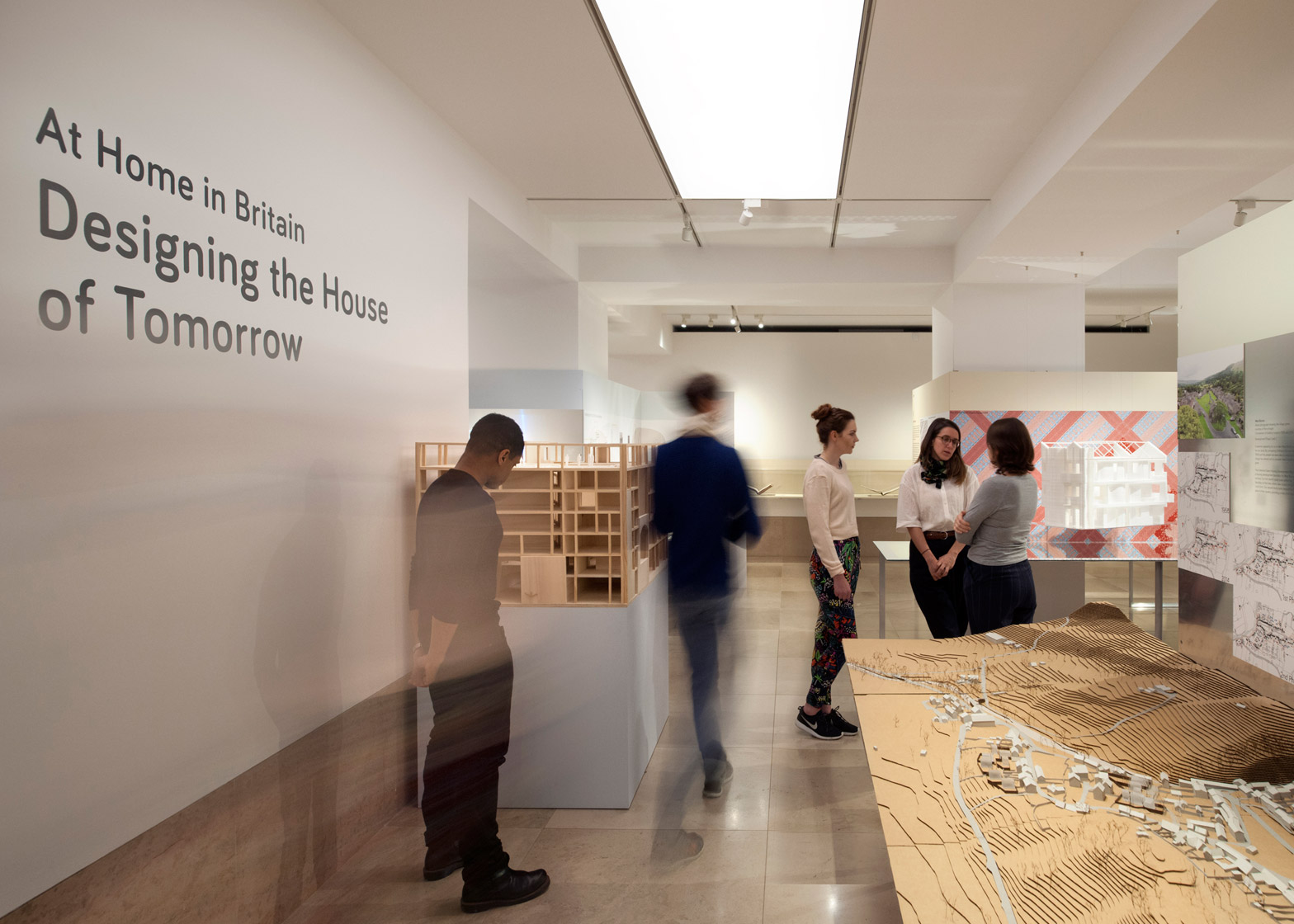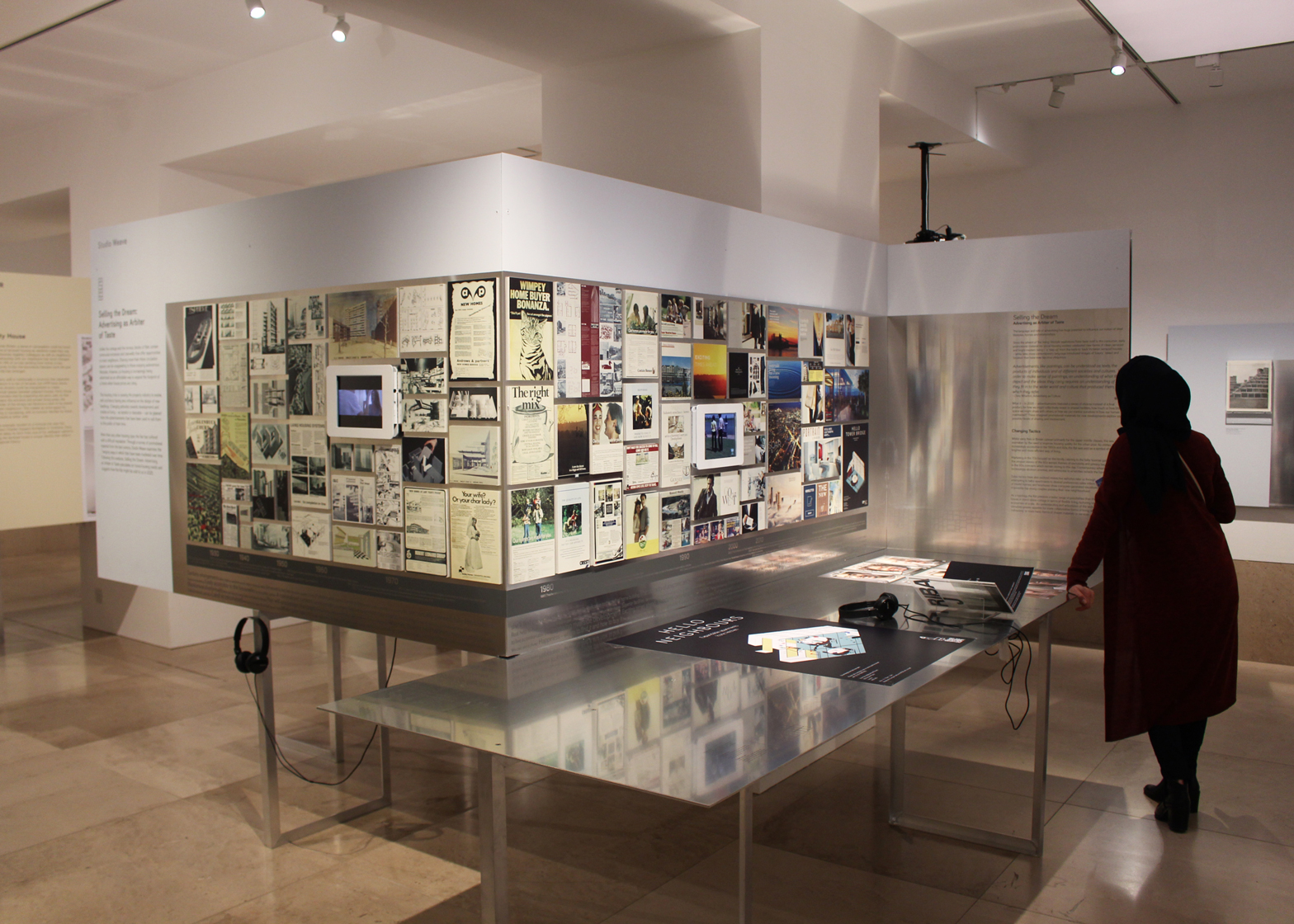Walter Segal-inspired cottages, co-living and custom-built terraces are among the solutions to Britain's housing crisis proposed in an exhibition at the Royal Institute of British Architects in London (+ slideshow).
Mecanoo, Studio Weave, vPPR, Mae, Jamie Fobert Architects and Maison Edouard François have all developed housing schemes for the RIBA's At Home in Britain: Designing the House of Tomorrow exhibition, which opened this week.
The proposals address issues including affordability and density, and the future of mass housing, by adapting cottages, terraced houses and flats to suit contemporary lifestyles.
London-based Jamie Fobert Architects, which designed the exhibition space, reinterpreted the cottage to make rural housing an affordable option.
Fobert's proposal adds a total of 43 houses in small clusters of eight to West Burton, a village in Bishopdale. The project uses repeated timber frames, infill panels and identical windows.
The design references the self-build construction that architect Walter Segal pioneered in the 1960s. His method adapted the timber frame construction and eliminated wet trades to enable people to build their own homes without the need for experience.
"It's a very simple self-build using a system of framing, which really owes much to Walter Segal," said Fobert. "It's not trying to be inventive, it focuses its attention on volume, light and simplicity."
The project is named New Fruit on Old Twigs after a study conducted by Alison Smithson in the 1950s about sensitively adding new housing to historical villages in the Yorkshire Dales National Park.
The co-living accommodation trend is also explored the exhibition, aiming to show the advantages of sharing space for all types of people, and not just the students and the elderly who it is often associated with.
Dutch firm Mecanoo proposes a low-rise block of flats featuring studios for students or singles who require a lower rent, maisonettes for families who need adaptability and loft spaces for the elderly.
"It's for about 60 or 70 people," Mecanoo partner Dick van Gameren told Dezeen. "In our experience it's the right size so that people still feel connected to the building that they live in."
"When it becomes bigger it's a very different relationship that people have to the building that they live in. The building size is a conscious choice, if it becomes smaller then it's more difficult to have connected spaces."
Selling the Dream: Advertising as Arbiter of Taste, by London-based Studio Weave, imagines advertising for shared flats in 2025.
Instead of using the term co-living, the series of posters details the advantages of shared living, such as having a cooking companion or someone to wait in for your shopping deliveries.
The terraced house is explored by vPPR, also based in London. Originally the home of factory workers, this typology is proposed to suit the contemporary work-from-home lifestyle.
Called The Party House, the design features a widened party wall, which accommodates all of the private functions and the entry to the house. This also creates a communal space between two houses to be shared between two families.
"We thought that could you begin to see the party wall as not just a shared structure, but a shared space," said studio co-founder Tatiana von Preussen. "The point about this diagram is that you get double the amount of space because you're sharing."
"We ended up pulling the house itself into the wall, so expanding the wall to fit the most basic elements of the house leaving a space on either side as an open shared space, almost like a garden but it's covered."
This area could be used by both families as an office space when working from home or for joint childcare. It is an easier version of communal living as you only have to coordinate with one other family, according to Preussen.
London-based practice Mae updated a building act passed in 1774, which divided terraces into four rates that developers could pick and chose. Called My Terrace, the proposal features facade and floor plans that the owner can mix and match to custom build a house that suits their lifestyle.
Paris-based Edouard François also proposes attaching low-rise structures to detached buildings for the Unstable Urban Condition of the Cottage. The original structures form an entrance hall for the adjacent low-rise.
The exhibition is accompanied by material from the RIBA archives, including drawings by Arne Jacobsen, Le Corbusier, Walter Segal and the Smithsons that informed the various schemes.
At the end of last year, RIBA conducted research that suggested that more than half of new homes in the UK are too small and in 2013 called on the UK government to protect and expand minimum housing standards for space and natural light.
"This exhibition addresses one of the most challenging issues that we are facing today, which is the housing crisis," said RIBA head of exhibitions Marie Bak Mortensen.
"We think that the one of the great fallacies is that architects are rarely involved in the design process and least of all affordable housing design."
At Home in Britain: Designing the House of Tomorrow runs from 18 May to 29 August 2016. It is the latest in a series of recent projects looking at innovative approaches to housing in Britain and abroad.
A recent competition by New London Architecture asked architects find solutions to London's housing shortage while a Milan exhibition by car brand MINI demonstrated a concept for shared urban living in dense cities.
Exhibition photography is by Philip Vile, courtesy of RIBA.








